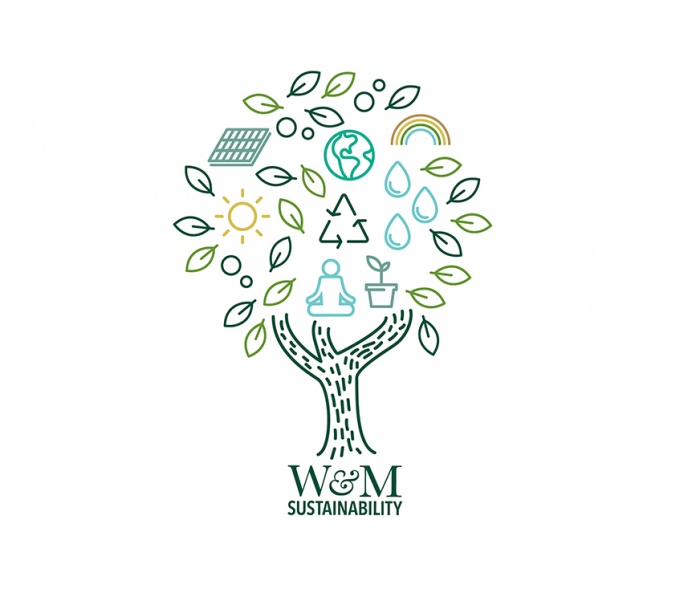The College of William and Mary has unveiled two major initiatives that will be implemented within the new year to meet standards for sustainability and conservation. First, the College has partnered with the University of Virginia to reach a goal for carbon neutrality by 2030. Second, the College has procured funding through an anonymous donation to create the Institute for Integrative Conservation. The IIC will provide a multifaceted, interdisciplinary venue for research and conservation efforts, according to the press release.
The partnership with UVA stems from common goals between Virginia’s public institutions. Director of Sustainability Calandra Waters Lake M.A Ed. ’08, broke down the partnership and said it will enable shared conversations on planning, engagement and support to other higher education institutions in Virginia. Furthermore, Waters Lake said the concerted effort will expedite action.
“We were both headed towards neutrality dates of 2030 independently and when we discovered that was taking place, it made a lot more sense to collaborate instead of compete against each other,” Waters Lake said. “Sustainability is really a team sport — you can’t be sustainable alone. Plus, both our universities face a lot of the same struggles. Our largest greenhouse gas footprint is from electricity, same with UVA.”
Building off his colleague’s thoughts, Vice President for Strategic Initiatives and Public Affairs Henry Broaddus explained that the decision to work with UVA felt natural since both universities already share information regarding wellness.
“There is an existing collaboration with UVA where we’re trading information about wellness,” Broaddus said. “And Calandra always reminds us, wellness is at the individual level what sustainability is at the macro level. So, in a way, this is a perfect bookend partnership with UVA. This is a starting place for partnership, and it’s not intended that this is an exclusive partnership. Any university that is working on a goal of this sort benefits from sharing lessons and best practices.”
As Waters Lake described, electricity will be the one of the primary focuses as the College progresses toward carbon neutrality. Renewable energy, particularly in the form of solar energy from nearby solar farms, will help reduce the emissions from this source.
A consultant will also be invited to the school next semester for advice and source identification. Engagement with the campus about greener habits will be another important step.
“We can turn all of our electricity to green power, but really, it’s people’s ability to change what their doing on campus that’s also going to influence how fast we get to carbon neutrality,” Waters Lake said. “There will be portions of this surrounding transportation, food and waste that will involve interaction with the campus community. We’re also hoping it will be something that people can take home with them and influence their own personal footprints.”
Waters Lake and Broaddus explained that the goal of carbon neutrality is only one aspect of climate action. This is why the IIC will be a critical asset to the College, in reaching this goal and also taking further steps in the realm of climate action.
Director of Geospatial Analysis Robert Rose described that the purpose of the Institute is to move beyond traditional conservation curriculum and create a vast conservation network. Rose worked alongside biology department chair and professor John Swaddle and others at the College to develop the concept and will bring it to fruition.
“It comes at it from two significant standpoints,” Rose said. “One is to build a whole new curriculum for students that will go beyond traditional conservation science curriculums, that will bring together people from all across campus including the business school, the law school, VIMS and Arts and Sciences, to really develop a new curriculum that looks at conservation broadly and integratively. It will cover the science but it will also cover things like design-thinking, communications, and the business of running NGOs.”
As for student involvement in the collaborative efforts, Rose is excited for what comes next.
“We intend to launch some research projects pretty quickly, and we’ll have students involved in those projects,” Rose said. “It’s very heavily student-focused.”
The other “significant standpoint” of the IIC will be its cultivation of a conservation network. As the institute begins its legacy at the College, it hopes to establish many partners to collaborate with.
“We’re going to begin by reaching out to conservation partners to explain what the Institute is going to be and how we hope to impact conservation and looking for partners that want to be involved,” Rose said. “Involvement now means identifying key projects as well as helping us think about curriculum for students that will best prepare students to work in the conservation field. So, we want NGOs’ input on the types of students they want to hire, what sort of skills and expertise they want to see.”
A theme of collaboration throughout and outside of the campus community rings true as the College works both toward carbon neutrality and advancing conservation curriculum.
The College’s commitments to carbon neutrality and the development of the institute highlight its values and the action it is taking to see them through. Both announcements follow the Board of Visitors’ endorsement of the College’s new vision, mission and values statement. As Broaddus explains, the school’s engagement with sustainability efforts demonstrates its committal to the statement.
“I think it’s really neat that this is one of the first actions to come out in the aftermath of [the statement] that is clearly acting on those values. There’s a line, ‘We create conditions that ensure William and Mary will thrive for all time coming,’ and this is very clearly taking action in that regard, showing that we’re going to live up to the ethos of the student culture and the campus culture here,” Broaddus said. “We’re going to show that green is more than a school color at William and Mary.”

